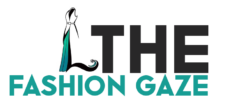The Fashion industry is a multi-billion dollar industry, making it one of the most significant industries in the world. However, with such an important industry comes a number of risks.
One of these risks is the security risk that businesses face in their fashion stores. This risk has become more prevalent with the rise in popularity of social media and online shopping.
The main security risk is credit card fraud and identity theft. This risk is often due to lack of physical security and poor digital security measures.
What are the Security Risks Faced in Fashion Stores?
In the last few years, there has been an increase in the number of robberies and shoplifting incidents reported in fashion stores. This is especially true for retailers like Zara, H&M, and Forever 21.
Some of the security risks faced by fashion stores include:
– Theft of high-value items: These are typically items that are expensive to make and can be sold on the black market for a higher price than they were originally sold at. Some examples include designer clothing such as coats, shoes, handbags, watches, jewelry, etc.
– Robberies: These are committed by people who have a weapon or are wearing masks to conceal their identity from store employees. They often enter through doors or windows that have been left open or broken during business hours
– Shoplifting: This is where people steal products without paying for them. It is typically committed by people who have a shopping bag with them when they enter a store and walk out without paying for anything.
The Comfort Zone of Robberies in Fashion Stores and How to Thwart Them
Robberies in the fashion industry are on the rise. The thieves have found a way to get away with their crimes because they know that security is not always present in the stores.
The thieves usually target the checkout stands where they can easily grab what they want without being seen. They are able to do this because of their comfort zone – knowing that there is not much security presence in these areas. Security weapons like 20 gauge ammo and guns are so necessary to protect fashion stores from robberies.
In order to thwart these robberies, retailers should put more security presence in checkout stands and make sure that it’s well-lit and visible at all times.
Security Measures to Boost the Retail Experience & Reduce the Risk of Fraud
Retailers are now employing more advanced security measures to prevent fraud and increase the overall security of their customers.
Retailers are now taking steps to prevent fraud and reduce the risk of theft with the help of various security measures. Some of these include biometric authentication, which uses fingerprints or facial recognition software.
Here we presents a few examples of how retailers have employed these security measures in order to improve their customer experience while also protecting them from fraud.
Any Businesses Can Benefit from a Security Audit for Increased Awareness and Protection against Extortion
A security audit is a thorough examination of a company’s security infrastructure and practices. It is an important step in making sure that the company’s employees are not vulnerable to extortion or fraud.
A security audit can be conducted by an external third party or internally by the company’s IT department. A security audit can be used to identify potential risks and vulnerabilities in a company’s network, devices, applications and data.
There are many benefits of conducting a security audit, such as increased awareness of current policies and practices, protection against extortion, reduction of liability insurance premiums, increase in productivity and cost savings.







